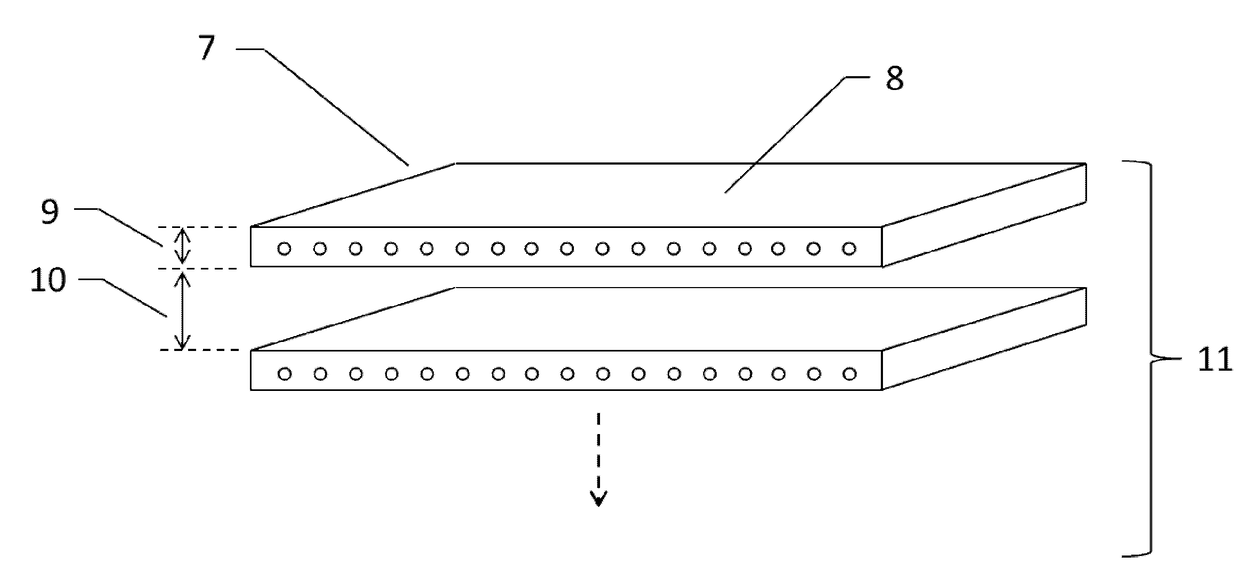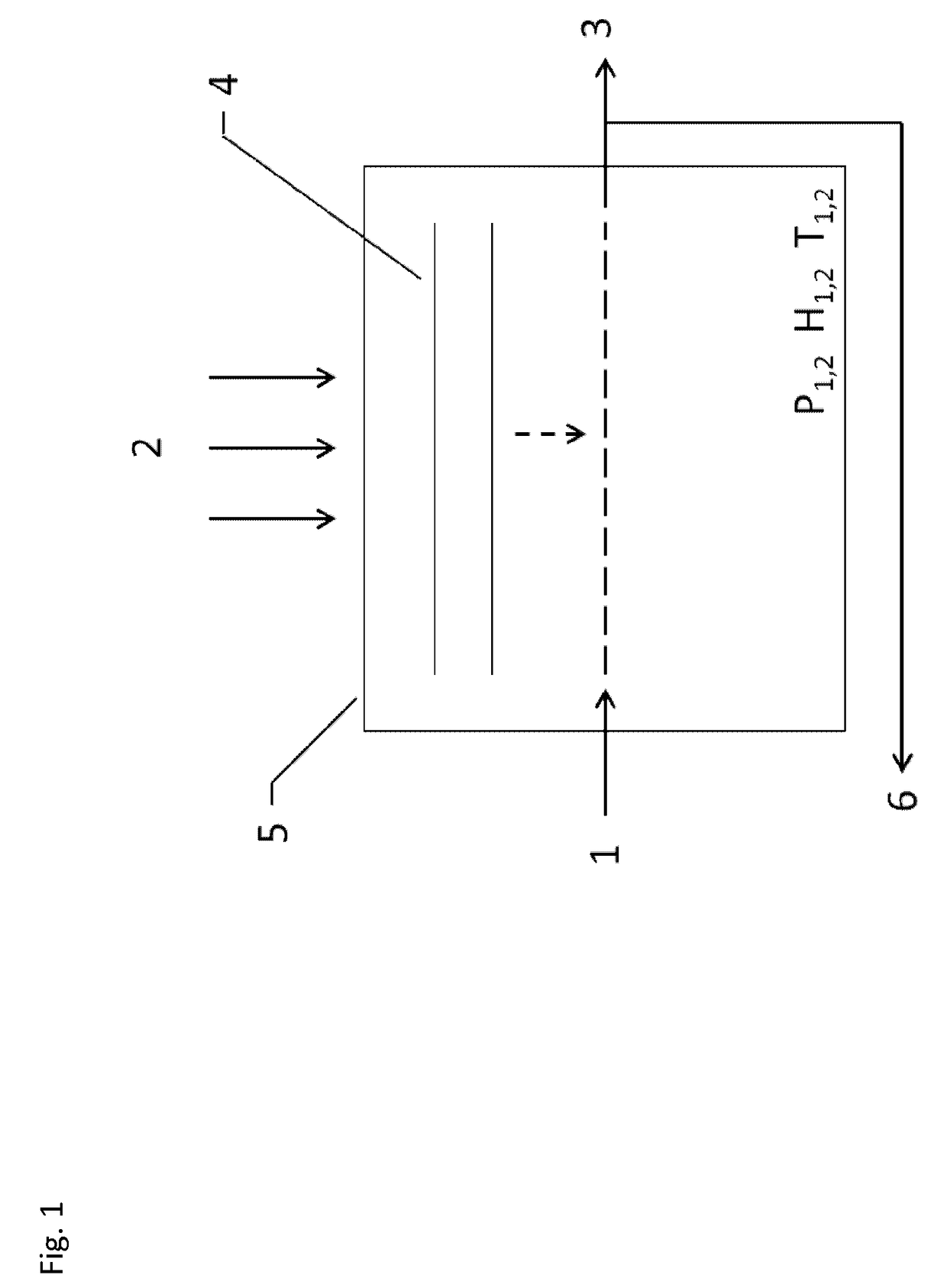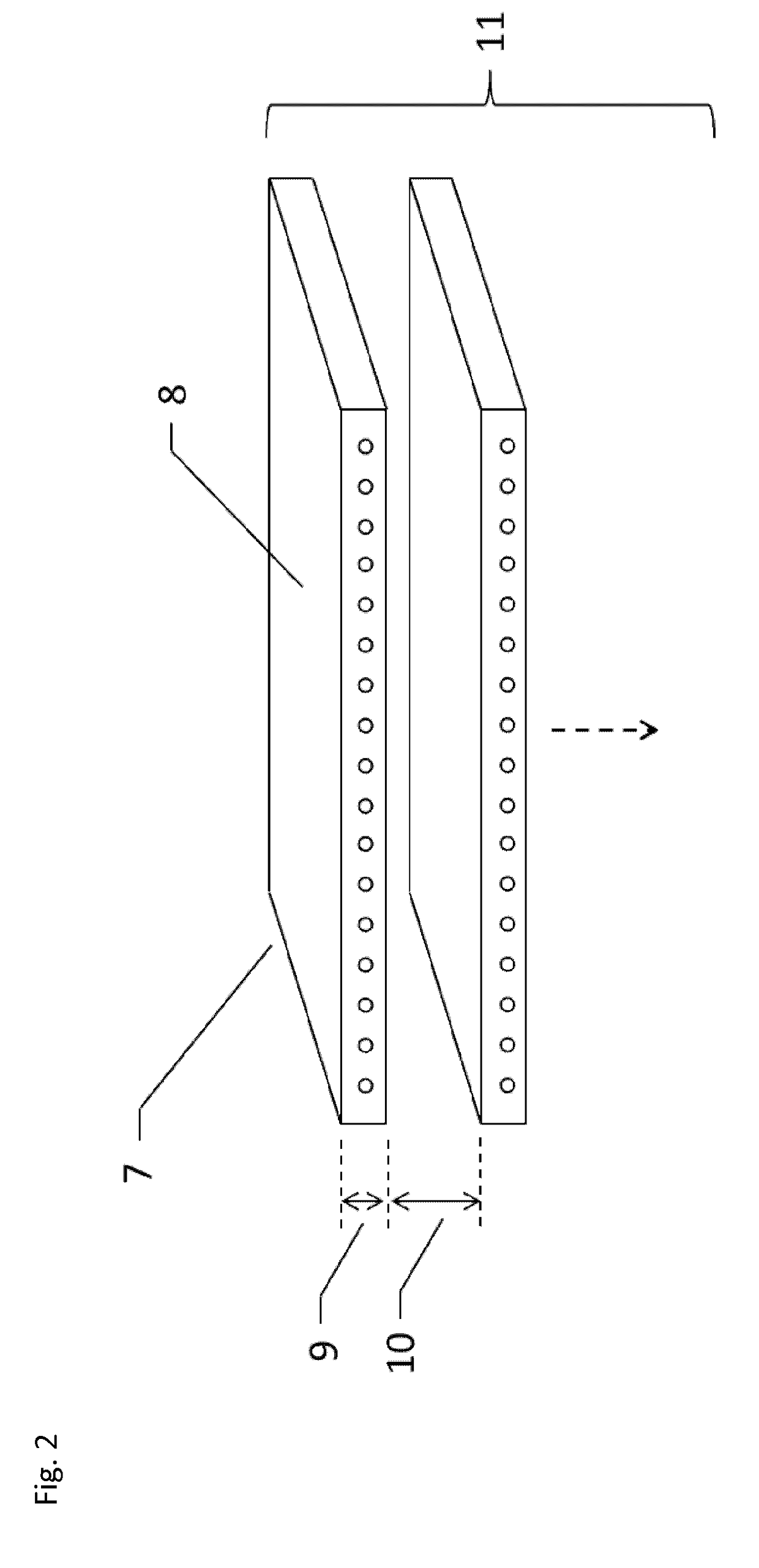Method and device for the reversible adsorption of carbon dioxide
a carbon dioxide and reversible technology, applied in the field of reversible adsorption of carbon dioxide, can solve the problems of increasing transportation costs, consuming a tremendous amount of energy in the liquefaction process, and consuming energy
- Summary
- Abstract
- Description
- Claims
- Application Information
AI Technical Summary
Benefits of technology
Problems solved by technology
Method used
Image
Examples
example 1
Adsorption Test
[0095]A round cartridge was loosely filled with adsorbent material, which was held in a container between two layers of mesh, at a thickness of 1 cm. The adsorbent material was a primary amino functional ion exchange resin (a dinvinyl benzene based polymeric particular adsorbent having a primary amino functionality at a total capacity of at least 2.0 eq. / l, a surface area (BET) in the range of from 25 to 75 m2 / g, and an average pore diameter 5 to 150 nm) and held between two layers of appropriately pored metal mesh was placed in an airtight sealable container. The container was linked to a vacuum pump, and a carbon dioxide sensor measuring out-coming gas streams. Temperature and humidity as well as carbon dioxide concentration were measured by suitable sensors throughout the test.
[0096]The adsorbent was exposed by opening the container allowing for natural diffusion of CO2 into the material. It was then heated up to 60° C. to 100° C.
[0097]During this process the adsor...
example 2
Ambient Adsorption Test
[0102]Two rectangular cartridges having a dimensions of length by width of 10 cm, with an adsorbent bed thickness for cartridge 1 of 1 cm, and 5 cm for cartridge 2 by 20 cm (length by width by height). The cartridges comprised a stainless steel mesh, were loosely filled with a primary amino functional ion exchange resin, i.e. a divinyl benzene based polymeric particular adsorbent having a primary amino functionality at a total capacity of at least 2.0 eq. / l, a surface area (BET) in the range of from 25 to 75 m2 / g, and an average pore diameter 5 to 150 nm). The test cartridges were placed in a vacuum oven with nitrogen purge (MSL) to remove all adsorbed carbon dioxide. Then the cartridges was taken from the vacuum oven and placed on a scale, thereby exposed to the ambient air. The weight gain was measured over time, and corrected for humidity. Carbon dioxide adsorption was measured by a Mettler Toledo mass balance / 4 kg range (MSL), Sartorius BP310S mass balance...
example 3
Electrically Heated Regeneration Arrangement
[0104]In a cartridge according to Example 2 having a volume of 100 cm3, prior to loading with adsorbent material, a Nichrome wire, as typically used in hair dryers as heating means, of 40 cm length was embedded in a manner that allowed to heat the entirety of the content of the cartridge, by direct heat transfer to the adsorbent, which is in direct contact with the wire (see FIG. 6). The cartridge was then loaded with adsorbent. Applying less than 15 W of electricity to the wire allowed heating the entire cartridge to over 80° C. in less than 20 minutes.
[0105]The wire may be configured in differently ways to maximize heating efficiency based on the shape of the cartridge, ie. spirally in the case of a cylindrical volume.
PUM
| Property | Measurement | Unit |
|---|---|---|
| Temperature | aaaaa | aaaaa |
| Temperature | aaaaa | aaaaa |
| Temperature | aaaaa | aaaaa |
Abstract
Description
Claims
Application Information
 Login to View More
Login to View More - R&D
- Intellectual Property
- Life Sciences
- Materials
- Tech Scout
- Unparalleled Data Quality
- Higher Quality Content
- 60% Fewer Hallucinations
Browse by: Latest US Patents, China's latest patents, Technical Efficacy Thesaurus, Application Domain, Technology Topic, Popular Technical Reports.
© 2025 PatSnap. All rights reserved.Legal|Privacy policy|Modern Slavery Act Transparency Statement|Sitemap|About US| Contact US: help@patsnap.com



